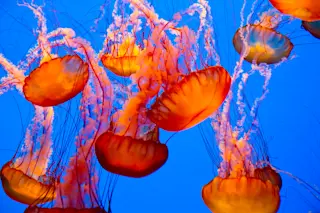For the month of April, the canals of Venice were empty. Gondolas and vaporettos were moored, foreign tourists were sequestered in their home countries and local Italians were in lockdown. As a result, the sediment that had always floated in the canals finally settled to the bottom, revealing alien visitors. Not far from San Marco square, a jellyfish the size of a golden retriever was captured on video. It moves surprisingly fast down a canal, springing along at a jogger’s pace, bell pulsing and tentacles rippling.
If some creature is going to find a way to press on through a changing ocean environment, the jellyfish is a good candidate. They were on Earth at least 500 million years ago, back when Venice was a heap of smoking volcanic slag on the giant continent of Gondwana. And they will probably be wandering through whatever becomes of Venice 500 million years from ...














